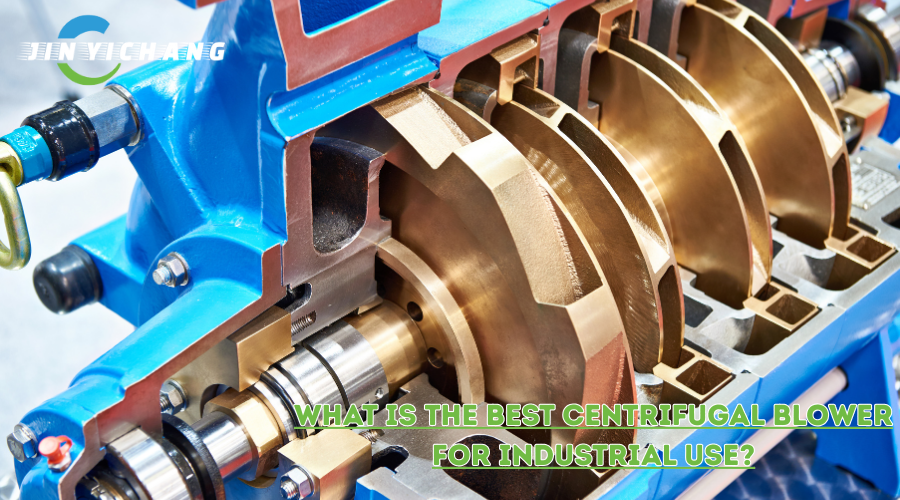

Choosing a centrifugal blower for industrial use requires lots of analysis. You must look at flow rate, static pressure, blade type, temperature, and various factors. When these factors come, things become more complicated, and this is where the challenges start. Therefore, it is not easy to consider the best centrifugal blower type. Different types have different performance levels. They become the best when you choose them for the kind of application they match. Different industrial applications have different sizes and requirements. It means you must follow a list of guidelines to help you in the selection process. Choosing a centrifugal blower will be easy for you when you know the application type, air volume, and all the factors connected to the output requirements.
There is no specific type you can consider the best because it all depends on their applications. Centrifugal blowers are found in different types and sizes, which makes them suitable for their respective applications. Some applications need large sizes, and some require small or medium sizes. However, some parameters will simplify the selection process for you. Then you can decide which centrifugal blower is best for your chosen purpose.
The flow rate means how much air it can release. It all depends on the size of the centrifugal blower because different applications have different needs. Some require a high flow rate, and some require a low one. If the size of the blower is large, it can blow large volumes of air. Industrial centrifugal blowers need to be larger than domestic ones. They have to deal with massive air flow systems in different industries.
Then you have static pressure, which contributes to selecting the best centrifugal blower. If static pressure matches the requirements of your application, you will no longer need to find anything further. A higher static pressure means a blower can bear high resistance from ductwork, such as duct length, structure, etc. Lots of factors affect static pressure, like valves, elbows, and duct material used in the HVAC system. Moreover, humidity, temperature, misalignments, and blockages in the duct system can affect static pressure.
Then, you must choose the blades your centrifugal blower should have. If you go with forward curved blades, they will give low and medium static pressure. The forward blades’ direction is in the airflow, which leads to higher airflow. This type of blower is suitable for clean air applications. However, it is low-efficiency and more appropriate for domestic applications like HVAC systems. It gives large volumes of air and low pressure at a low cost.
You will also find backward curved blades that can give high static pressure. They have a smaller number of blades than forward blades. In this type, the blades’ direction is against the airflow. Therefore, backward curved blades can deal with air full of dust and debris. This centrifugal blower type suits industrial dust collection, HVAC systems, and pneumatic applications. Moreover, this type of blade is suitable for fume exhausts. However, all these operations take place at a high cost.
Then you can look at radial blades that have straight blades. They are suitable for mild dust applications with low efficiency. However, these blades generate high pressure, making them ideal for a few home and industrial applications.
The last one is an airfoil blade, which is more energy efficient than the others. It is suitable only for clean air applications. Moreover, its quiet operations, large volumes of air flow, and high static pressure make it suitable for specific applications like server rooms, medical rooms, etc.
The air quality level will help you decide the best centrifugal blower. Some deal with clear air, and some deal with dust and debris. You can not install randomly because the blade type determines the performance level. For instance, a forward-blade centrifugal blower will be suitable if you choose clean air applications. If it is about dust and debris in the air flow, backward blades will perform better. Medical places like clean rooms need support from these blowers for a stable exhaust system. Likewise, industrial applications that deal with extreme dust need heavy-duty blowers.
HVAC systems, fume exhausts, pneumatic applications, and air-releasing systems have different temperatures. Some have hot temperatures, and some have cold temperatures. Some even deal with both types of temperatures. Therefore, the size, air volume, and blade types of centrifugal blowers contribute to the number of applications. For instance, food processing units require hot air flow, and you have to choose the centrifugal blower accordingly.
Some industrial centrifugal blowers are loud, and some are quiet. You have to choose them based on size and air flow. Therefore, the noise level also varies depending on the size of the centrifugal blower and its air flow rate. Where domestic HVAC systems require quieter blowers, industrial air flow systems can adjust with louder types. The reason is the air volume they have to deal with, making them louder because of the larger blades.
The quality of the material is also essential when choosing the best centrifugal blower. High-pressure centrifugal blowers require durable materials against dust and debris. If the material is not heavy-duty, the system will suffer corrosion and other damages, which will reduce the performance of the air flow system. However, a medium level of durability is enough for clean air flow since debris and dust are not involved.
All these elements will help you choose the best centrifugal blower. There is no specific type or model of centrifugal blower that you can call the best, since it all depends on compatibility and performance level. Some centrifugal blowers deal better with clean air, and some deal better with dust and debris. Each type has different blades installed, and the duct system has various conditions.